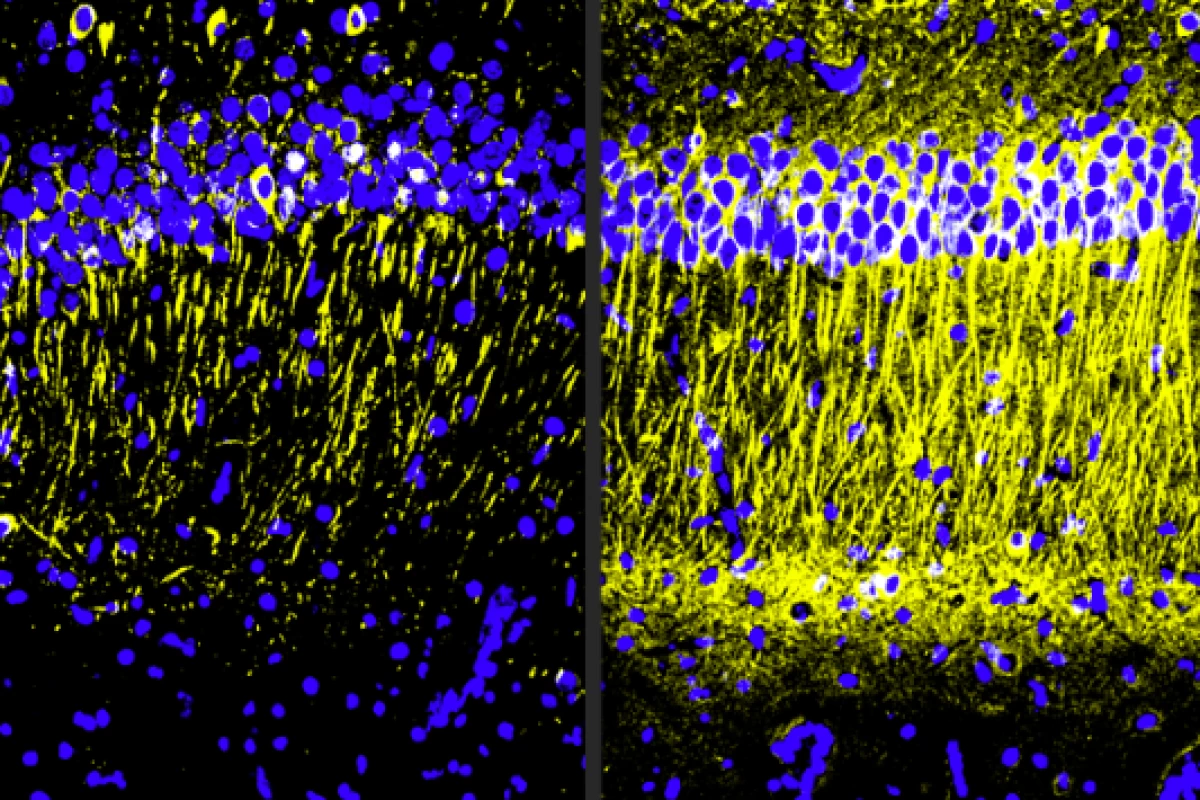In an effort to find new treatments to halt the progression of Alzheimer's disease, scientists at The Picower Institute for Learning and Memory at the Massachusetts Institute of Technology (MIT) have landed on a molecule that can improve memory by putting the brakes on a process that causes brain inflammation.
The A11 molecule targets the genetic transcription factor PU.1, which has already been linked to Alzheimer’s disease, controlling inflammatory gene expression in the brain's microglia immune cells. The researchers found that by using A11 to suppress PU.1 activity, the molecule was able to reduce its expression in the brain, while not affecting PU.1's other roles, such as ensuring the production of a variety of blood cells.
"Inflammation is a major component of Alzheimer's disease pathology that has been especially hard to treat," said study senior author Li-Huei Tsai, Picower Professor of Neuroscience at MIT. "This preclinical study demonstrates that A11 reduces inflammation in human microglia-like cells as well as in multiple mouse models of Alzheimer's disease and significantly improves cognition in the mice. We believe A11 therefore merits further development and testing.”
The researchers discovered A11's effectiveness after screening more than 58,000 small molecules contained in FDA-approved drugs and other chemicals. When dosed with A11, PU.1's expression and secretion of inflammatory cytokines was greatly reduced. There's now overwhelming evidence linking brain inflammation and cognitive decline.
With further investigation, the scientists found that A11 helps prevent microglia from overreacting in response to inflammatory cues. This was consistent across the human cells and the mouse model. A11 was also able to cross the blood-brain barrier, which is crucial for targeted treatments, and remained in brain cells longer than anywhere else in the body.
"A11 represents a first-in-class molecule that converts PU.1 from a transcriptional activator to a transcriptional repressor, resulting in a controlled state of microglial inflammation," the authors wrote.
While a preliminary finding, the researchers believe it has great therapeutic potential that could even complement existing and emerging Alzheimer's disease treatments.
"Given that A11 acts via a distinct mechanism from existing AD therapeutics, A11 could be used alone or in combination with approved therapeutics to provide improved treatment options for neurodegenerative diseases," the authors said.
The research was published in the Journal of Experimental Medicine.
Source: The Picower Institute





